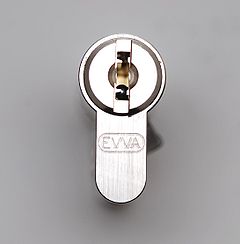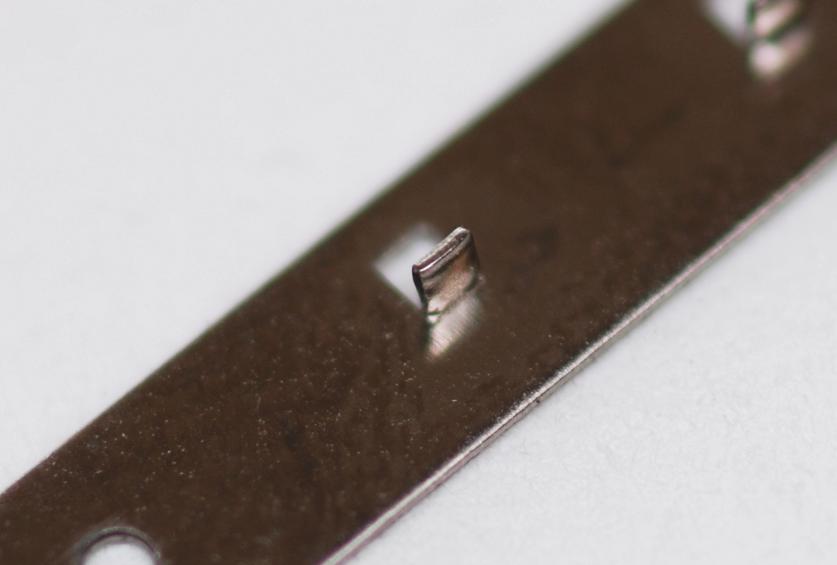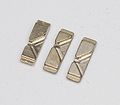EVVA MCS: Difference between revisions
From Lockwiki
Jump to navigationJump to search
| Line 32: | Line 32: | ||
Minor Locking Elements (Generation 2) | Minor Locking Elements (Generation 2) | ||
* Gen 2 locks have the same active ball bearing pin, it is simply moved forward in the lock from Gen 1 | * Gen 2 locks have the same active ball bearing pin, it is simply moved forward in the lock from Gen 1 | ||
* Gen 2 adds passive sliders (4 on top, 3 on bottom) [[File:Mcs_sliders.jpg]] | * Gen 2 adds passive sliders (4 on top, 3 on bottom) [[File:273px-Mcs_sliders.jpg]] | ||
* Key has slider tracks on the top and bottom [[File:Mcs_profiles.jpg]] | * Key has slider tracks on the top and bottom [[File:320px-Mcs_profiles.jpg]] | ||
<div align="center"><gallery> | <div align="center"><gallery> | ||
Revision as of 16:46, 31 July 2019
EVVA MCS
| EVVA MCS | |
 | |
| Name | EVVA MCS |
|---|---|
| Manufacturer | EVVA |
| Lock Type | Cylinder |
| Lock Design | Magnetic |
| Year(s) Produced | 1975-Present |
| Patent | US 4,084,416 |
The MCS (or Magnetic Code System) is a magnetic lock made by EVVA. It is one of the few magnetic locks to gain widespread acceptance and is also considered one of the best mechanical locks in the world. The MCS has been sold under a variety of names, including IKON System M (DE) and Mottura MC (IT)[1].
Principles of operation
Main Locking Element (Magnetic Rotors)
- There are 8 magnetic rotors, 4 on each side of the keyway
- Magnets in each rotor are Diametrically charged File:Diametric-magnet.jpg
- A plate with one or more gates is glued to the magnet

- Inner sidebar has 3 fingers and outer sidebar has 1 finger/pin that interact with the rotor gates

- Whole sidebar must slide fore (towards key bow) to align with milling in the bible.
- When both sidebars are slid forward the core can then rotate
Minor Locking Elements (Generation 1)
- Gen 1 locks have 1 active ball bearing pin, this simply must be depressed to allow the core to turn, there is only 1 height.
- There are 12 passive ball bearings that will most often jam when an incorrect key is inserted. Occasionally these can also jam when under a picking attack, but they are less likely and need only a slight bump to be corrected.
Minor Locking Elements (Generation 2)
- Gen 2 locks have the same active ball bearing pin, it is simply moved forward in the lock from Gen 1
- Gen 2 adds passive sliders (4 on top, 3 on bottom) File:273px-Mcs sliders.jpg
- Key has slider tracks on the top and bottom File:320px-Mcs profiles.jpg
Disassembly instructions
Generation 1 (1 active ball bearing, 12 passive ball bearings)
- Remove c-clip
- Depress active ball bearing with a tool and slide core towards front
- Keep checking both ball bearing and gap towards the rear of plug as they will both get caught on the 3 passive pins and 1 active pin as plug moves forward
- Once plug is out:
- Remove split ring sidebar reset system
- Remove outer sidebar
- Use pliers or knife to snap out plastic sidebar spacer (WARNING! older locks the plastic can be quite brittle, likely it will crack, though cracked sidebar spacers can be repaired with superglue)
- Remove inner sidebar to then access the rotors
- Rotors can be removed
- Repeat for other sidebar
Vulnerabilities
The MCS is considered one of the best mechanical locks in the world.
Confirmed picking and decoding are possible on this lock using an audio attack for feedback.
It is vulnerable to one or more of the following:
Gallery
References
- ↑ PULFORD, Graham (2007). High Security Mechanical Locks: An Encyclopedic Reference. ISBN 0750684372.
See also
| This article is a stub. You can help Lockwiki by expanding it. |
















